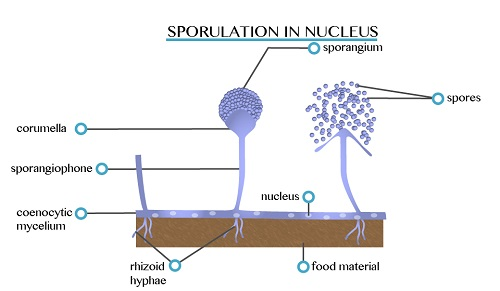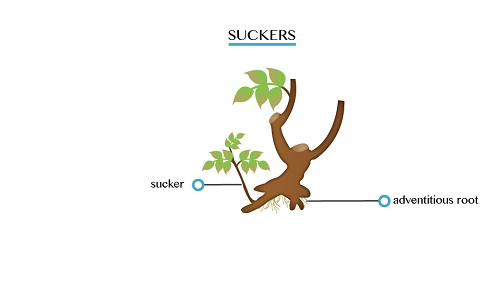Reproduction is the ability of living organisms to form new individuals of the same species from those already in existence. Here, the new organisms replace those that have died and so life continues. It can also be defined as the process whereby organisms produce new individuals of the same species. It is one of the important features of living things.
The Merits and Demerits of Sexual and Asexual Reproduction
Explain the merits and demerits of sexual and asexual reproduction
Sexual Reproduction
This is a type of reproduction in which new organism is produced when a male gamete fuses with a female gamete. Sexual reproduction involves the fusion of two gametes. The process of fusion of gametes is called fertilization.
These two gametes differ in form and function and each is produced from a different organ. In animals the gametes producing organs are called gonads. These include the ovaries and testes. In flowering plant structures concerned with the production of gametes are the ovaries and anthers. The testes and anthers produce the male gametes while ovaries produce the female gametes.
Merits of Sexual Reproduction
- It ensures genetic stability
- It ensures perpetuation of life
- It brings variation
- Leads to the interaction among organisms
Demerits of Sexual Reproduction
- Offspring have a great chance of inheriting diseases from the parent
- The reproduction takes long time
- It needs energy
- The sexual reproduction produces few numbers of offspring
- It depends on presences of two parents
- It leads to great chance of spreading diseases
- It takes a long time until offspring are produced
Asexual Reproduction
This is the type of reproduction whereby production of offspring is from single organism without the production of gametes. There is no fusion of gametes.
Examples of organisms who produce asexually are amoeba and bacteria. Asexual reproduction involves only one individual organism. That means no change of genetic material is passed from a parent to an offspring. The offspring are also identical to their parents.
In this kind of reproduction, in same organisms, body part such as roots, stems or leaves may become reproductive body organs.
Depending on the type of organisms asexual reproduction may be of different forms or ways such as:
- Fission
- Sporulation/Spore formation
- Budding
- Fragmentation
- Vegetative propagation
- Binnary Fission (Splitting)
- Suckers
- Bulbils
Binary Fission (Splitting)
This is an asexual reproduction in which an organism divides into two equal parts, which are identical to each other.
Each part then grows to attain the original size of the parent cell and hence become a separate and independent organism.

Fragmentation
This is a form of asexual reproduction in which organisms (parent) breaks into two or more parts. Fragments grow and develop into a new organism with identical features as the parent. Example worms such as Nematodes and flat worms.
Sporulation/Spore formation
Sporulation is asexual reproduction by the use of spores. The spore develops from single cell as a result of mitosis, forming a structure known as sporangium. When the sporangium is truly developed, the wall bursts to release the spores which when placed in suitable area they germinate into new organisms.
Other organisms, which reproduce by sporulation, are ferns and mosses.

Budding
Budding is a type of asexual reproduction in which a new organism arises as an outgrowth (bud) of the older organism (parent). The bud later separates from the parent and grows to become an independent organism to attain the size of the parent. Examples: yeast and hydra

Some flowering plants reproduce through the formation of structure called buds. Roots may form such buds, leaves or underground stems and such buds sprout to form new independent plants.
Vegetative propagation
Vegetative propagation is a form of asexual reproduction found in plants in which a bud grows and develops into a new plant. The detached plant, root, stem or leaves at some stages grows and develops into an independent plant.
Artificial vegetables propagation: This is vegetative propagation, which occurs through man’s manipulation. Man can learn from plants’ natural vegetative propagation and can intervene and make propagation of plants artificially.
Natural vegetative propagation: Vegetative propagation involves different parts of plants as discussed below. Such as:
Bulb
In this type each bud grows to form a shoot, which produces a new bulb at the end of the growing season.
Bulb is a modified underground shoot having fresh strong leaves

Tubers
These are short swollen underground storage organs formed from a stem or a root. New tubers are made at the end of the growing season but do not arise from old tubers.
Stem tubers
These are short swollen underground stems, which store food, such as starch. Normally, yam plants form a number of tubers each of which can rise to a new plant. Such new plant continues to live after the death of the parent.

Root tubers
These are swollen adventitious underground roots. Roots tubers such as sweet potatoes and cassava store their food in root tubers and do not bear leaves or bud.

Rhizomes
These are horizontally growing underground stems, bearing leaves, buds and adventitious roots. Examples are lilies, ferns and grass.

Stolons
These are slender stems, creeping horizontally as they grow along the ground surface. Examples: strawberries, black currant and oxalis.

Suckers
These are short horizontal branches, arising from the main stem or just below ground level. Suckers contain food reserves. Examples: Bananas, sisal and pineapples

Tap root
A taproot is the main root that arises from a radical. Tap roots may become swollen and act as storage organs.

Tillers
These are collection of shoots. Grass plants consist of a number of tillers. Each tiller has a number of leaves, which arise from the stem of nodes at the base of the leaves.
Leaves
Some plants such as cactus propagate vegetative using leaves. When the leaves fall off from a plant they develop adventitious roots and buds, which later may grow and develop into mature plants.
Merits of Asexual Reproduction
- Asexual reproduction results into an individual with the same genetic constitution as their parent.
- Its offspring matures faster than sexually reproduced organisms
- It does not depend on processes of pollination, seed or fruit dispersal
Demerits of Asexual Reproduction
- Asexually reproducing organisms are at a great risk to perish or get destructed when environmental conditions are unfavorable
- The parents may pass undesirable characteristics to the offspring since only one individual organism is involved in asexual reproduction
- Competition for resources such as food and shelter may occur due to large number of organisms being produced
Meiosis and Reproduction
The Meaning of Meiosis
Give the meaning of meiosis
Reproduction involves the transmission of genetic materials from one generation to the next insuring that species survive. The process of reproduction involves meiosis.
Meiosis is the type of cell division, which occurs in the reproductive organs to produce sex cells known as gametes.
In this type of cell division the parent cells has diploid number of chromosomes. However the daughter cell arising from the cell division has the half number of chromosomes a condition known as haploid state.
Therefore meiosis reduces the chromosomes number into half means from 2n to n.
The Significance of Meiosis in Relation to Reproduction
Explain the significance of meiosis in relation to reproduction
Meiosis leads to the formation of reproductive cells (Gametes) such as ova and sperms each with half number of chromosomes of the parent cells in organisms reproducing through sexual reproduction.
It involves the possibility of exchange of pieces of genetic information between the paternal and maternal chromosomes of each pair leading to new combination of characteristics in the gametes.
It brings about variation when the members of each pair of chromosomes are separated from each other independently (Random assortment)
Meiosis leads to new combination of genes through the process of independent assortment of chromosomes occurring during meiosis I
Meiosis involves number of processes from prophase, metaphase, anaphase and telephase. There are two meiotic divisions, the first and the second division. All the above named processes occur in both the first meiotic division and the second meiotic division.
First Meiotic Division
The first division of meiosis consists of:
- Prophase I
- Metaphase I
- Anaphase I
- Telophase I




Prophase I
During prophase I the following events occur.
- The nucleus disappears and the centrioles if present migrate to the poles
- Chromosomes condenses and the spindle is formed
- As prophase proceed homologous chromosomes come to lie side by side and there after become intertwined by the process called synapsis
Through synapsis homologous chromosomes is referred to as crossing over. The point at which homologous chromosomes exchange genetic materials is known as chiasmata
Early Prophase I
The following events occur during early prophase:
- Chromosomes contract, thickening, shortening and become more visible
- Nucleus disintegrate and disappear
Mid Prophase I
- Homologous chromosomes come together (synapses) forming a bivalent
Late Prophase I
- Chromatids cross over by chiasmata which results into exchange of genetic materials
Metaphase I
- Bivalent homologous chromosomes moves to the equator of the spindle
Anaphase I
- The two homologous chromosomes part company and migrate to opposite poles of the spindle
- The centromeres of the homologous pairs migrate towards the opposite poles where they are attracted.
Telophase
- The chromosomes reach their destination
- The spindle apparatuses breaks down and disintegrates
- Then the nucleus membrane reforms around each set of chromosomes
- The cell constricts across the membrane and divides into two
Telephase I make the end of the first meiotic division.
- At the end of this prophase the number of chromosomes in each cell is half the chromosomes number cell.
- This is the reason why first meiotic division is referred to as Reduction division
Second meiotic division
Prophase II
Centrioles replicates and a new spindle apparatuses formed

Metaphase II
Chromosomes migrate to the equator f the spindle

Anaphase II
- Sister chromatids part company and migrate to opposite poles of the cell
Telophase II
- The spindle apparatuses disappears
- The nucleus repairs and a new nucleus membrane is formed around each set of chromatids
- The chromatids uncoil and the cell divides into two
- Chromosomes regain their thread like structure and the cell enter interphase. Meiosis results into the formation of four daughter cells each with haploid set of chromosomes
- It should be stressed that the four daughter cells formed has the half number of chromosomes present in the original parent cell.



No comments:
Post a Comment